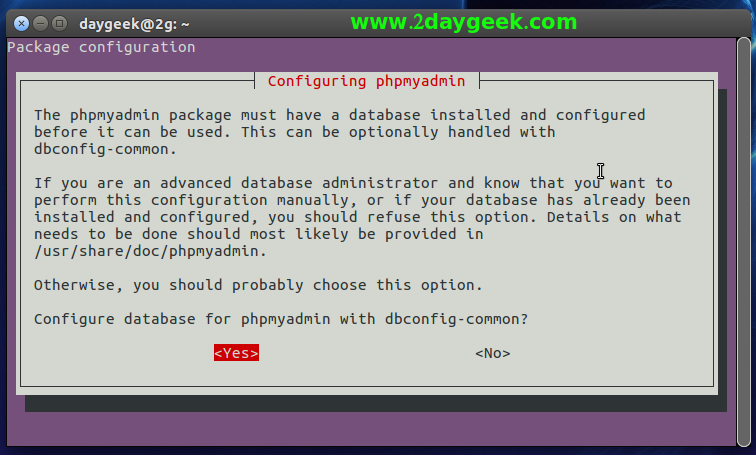



CHANGE PHPMYADMIN PASSWORD UBUNTU UPDATE
UPDATE user SET Password = PASSWORD('newpwd') UPDATE er SET Password=PASSWORD('newpwd') WHERE User='root'.If you have a mysql root account that can connect from everywhere, you should also do:.SET PASSWORD FOR = PASSWORD('password').from the mysql prompt execute this command to be able to change any password.start the mysql client process using this command.sudo /usr/sbin/mysqld -skip-grant-tables -skip-networking &īecause you are not checking user privs at this point, it's safest to disable networking.Start the mysqld demon process using the -skip-grant-tables option with this command.Stop the mysql demon process using this command :.To reset your mysqld password just follow these instructions : It is a good thing to unplug your server from the network or at least disable remote access. įollowing this procedure, you will disable access control on the MySQL server. To resolve this problem ,a fast and always working way is the "Password Resetting". To find the Ubuntu Server Guide related to your specific version, please go to:Īre you looking at this page because you cannot access the mysql server installed on your pc/server when you were trying to see if it works well? Or do you receive error messages like the following? :ĮRROR 1045: Access denied for user: (Using Its contents are currently under review and being merged with the Ubuntu Server Guide. Please do not make any edits to this article. Restart the MySQL server: $ sudo /opt/bitnami/ctlscript.This article should be cleaned-up to follow the content standards in the Wiki Guide. If your stack ships an older version of MySQL, use this command: $ sudo /opt/bitnami/mysql/bin/mysqld_safe -pid-file=/opt/bitnami/mysql/data/mysqld.pid -datadir=/opt/bitnami/mysql/data -init-file=/tmp/mysql-init 2> /dev/null & If your stack ships MySQL v8.x, use this command: $ sudo /opt/bitnami/mysql/bin/mysqld_safe -pid-file=/opt/bitnami/mysql/data/mysqld.pid -datadir=/opt/bitnami/mysql/data -init-file=/tmp/mysql-init -lower_case_table_names=1 2> /dev/null & Stop the MySQL server: $ sudo /opt/bitnami/ctlscript.sh stop mysql TIP: Check the MySQL version with the command /opt/bitnami/mysql/bin/mysqladmin -version or /opt/bitnami/mysql/bin/mysqld -version If your stack ships MySQL v5.6.x or earlier, use this content: UPDATE er SET Password=PASSWORD('NEW_PASSWORD') WHERE User='root' If your stack ships MySQL v5.7.x, use this content: ALTER USER IDENTIFIED BY 'NEW_PASSWORD' If your stack ships MySQL v8.x, use this content: ALTER USER IDENTIFIED BY 'NEW_PASSWORD' ĪLTER USER IDENTIFIED BY 'NEW_PASSWORD' If you don’t remember your MySQL root password, you can follow the steps below to reset it to a new value:Ĭreate a file in /tmp/mysql-init with the content shown below (replace NEW_PASSWORD with the password you wish to use). $ /opt/bitnami/mysql/bin/mysqladmin -p -u root password NEW_PASSWORD Replace the NEW_PASSWORD placeholder with the actual password you wish to set. You can modify the MySQL password using the following command at the shell prompt. NOTE: When setting a new password, avoid the use of special characters or quotes, as this can sometimes cause issues when accessing the database through shell scripts. The output of the command indicates which database server (MySQL or MariaDB) is used by the installation, and will allow you to identify which guides to follow in our documentation for common database-related operations. To identify which database server is used in your stack, run the command below: $ test -d /opt/bitnami/mariadb & echo "MariaDB" || echo "MySQL" On account of these changes, the file paths and commands stated in this guide may change depending on whether your Bitnami stack uses MySQL or MariaDB. NOTE: We are in the process of modifying the configuration for many Bitnami stacks.


 0 kommentar(er)
0 kommentar(er)
